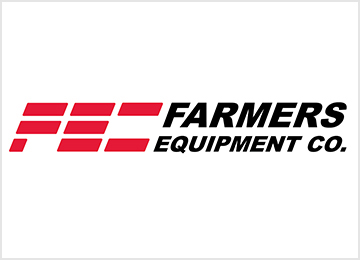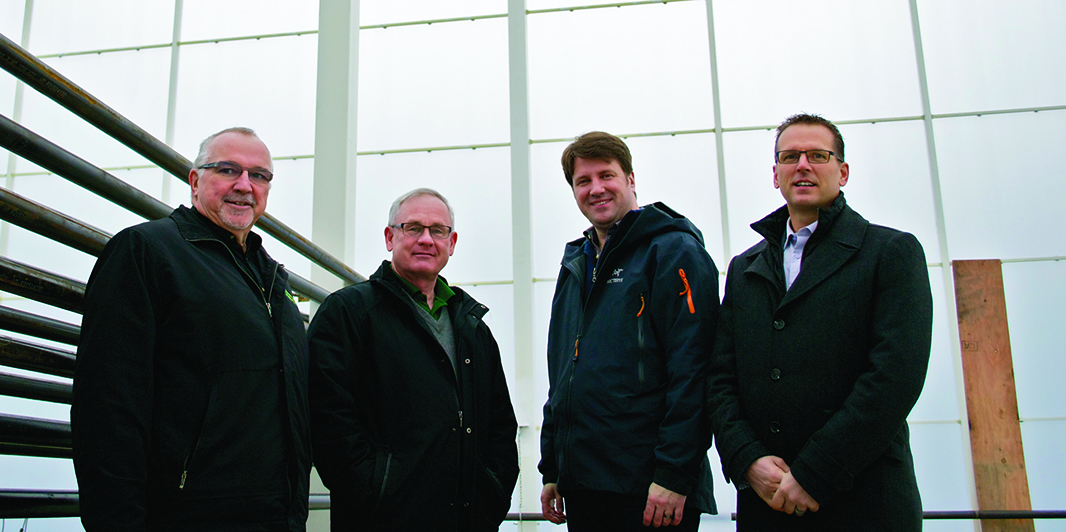UFV’s Agriculture Centre of Excellence
by: Tom Baumann, UFV Agriculture Department Coordinator, Director Pacific Berry Resource Centre
In 2013, British Columbia Premier Christy Clark asked the Ministers of Advanced Education and Agriculture (Amrik Virk and Pat Pimm) to work with UFV toward establishment of a Centre of Excellence in Agriculture. Having just moved from one campus to another within Chilliwack, the new location and lots more space provided a prime opportunity to start big. After extensive consultation with industry, governments, and partner institutions, as well as a fundraising campaign that resulted in generous donations from various sources, UFV was able to plan and finally build modern facilities for both the Animal Science and the Plant Science disciplines. The planned move-in date was set for January 2014.
We are extremely delighted to have a few world firsts in those facilities. The buildings themselves incorporate the features of the future, and welcome the visitor with a large interior foyer, where data from the greenhouses and barns is displayed for observers to take in what is currently happening at a glance.
From there to the right, a visitor will enter the barns, which also house the boilers and compressors for the greenhouse facilities. The heated side of the barn, which will house animals such as swine and chickens, will showcase handling and care of those animals, with a cold barn adjacent providing for other livestock that thrive in different conditions. A floor heating system will provide the heat and is easy to regulate. The facilities include plenty of storage for equipment, animal care materials, scales, and feeding supplies.
From the foyer to the left, a visitor will go along a bright corridor to the greenhouse facilities. This novel concept greenhouse with a height of approximately 12 meters was custom- designed and built by BW Global of Aldergrove. It is covered by polycarbonate sheeting that is specially designed for maximum light transparency and light diffusion within the growing compartments. The greenhouse will stay closed and with the most sustainable energy savings technology will handle heating and cooling as well as air exchange by reversible fans that go both directions. The uses are too numerous to list here, but note that positive or negative pressure can be built up inside the growing bays. Humidity and heat/cooling will also be managed by a high-pressure vapour system, which by itself is novel. A computer system by local company Argus completes the picture, with sensors throughout the greenhouse. As we will use this greenhouse for teaching and research purposes, we have managed to have a tremendous amount of sensors that measure outside and inside conditions with emphasis on energy savings. The system will manage air composition, heat, cooling, ventilation, relative humidity, light and so much more, giving us full control of the environment and making it possible to simulate night and day.
One other greenhouse, covered by light-diffusing polyethylene, is already built and with its wide construction, we are able to use it for teaching as well as research for more cool loving plants. We can also heat it with two unit heaters. We are in discussions on two other brand-new concept greenhouses for this centre. These will likely be added in 2014/15.
We will also have an outdoor crop area designated for demonstration and research plots that will showcase on a small scale what work goes on in research and demonstration partnerships that we have with industry, which we conduct where it counts the most, right in producers’ fields! In addition to this field facility, we are working with School District 33 in Chilliwack on a five-acre property under the lead of Sardis Secondary School and in collaboration with High Road Academy to expand their respective schools’ vibrant agriculture programs. This is a great opportunity to get students exposed to farm experience, research, and summer work. The idea is to eventually have students engaged in the study of agriculture from Grade One to the PhD level.

The barn, as well as the greenhouses, are rigged to collect water for irrigation purposes with a few large underground reserve tanks, and heat exchange for geothermal heating. We are looking at a composting and digester system in phase two that will help us to process all campus organic matter (including the Culinary Arts program’s organic matter), as well as that ideal combination between animal manure and plant matter.
Our new facilities AND our combination of animal and plant science is what makes our programming so strong. This combination also helped with us being designated an Agriculture Centre of Excellence.
In order to develop our centre of excellence, we have reached out to many institutions and amongst others are working with UBC and Okanagan College. Industry has taken to this model and we are currently engaged in a lot of research, mainly in the areas of food production and food security. By working closely with geography, biology, and trades programs within our university we strengthen the applicability of what we do, which further aids local industry.
We are looking at the big picture, which is to support industry the best we can, provide the resources to help B.C. industry to be a world leader in agriculture and food production, and make sure industry will always have qualified industry specialists, management, and workers. The five overarching elements in our teaching, applied research and technology transfer are from a study by agriculture management consultant Darrel Toma, commissioned in BC in 2013:
- Agri-business & Technology — agri-business training including marketing, management, quality assurance, food safety management, and skilled labor development. It must link to trends in mobility, e-commerce, and bundled technologies
- Food Ingredients and Value Added Foods — based on regional products. Foods for nutrition and for health — based on dairy, poultry, berries, wines and other regional products
- Sustainable Production Practices — in sustainable production for fruit and vegetable crops, poultry and livestock-processing, community and farm co-location for joint economic, social, and environmental goals
- Skilled Labor and Industry Practice change — in productivity improvement, robotics and automation for creating solutions to scarce labor supply problems. Related areas include: mobility applications/analytics, technology bundling, equipment and machinery
- Rural Entrepreneurship & Tourism — including marketing, management, customer service, foods, wine and related beverages, and small- scale ventures.
To that end, the new Agriculture Centre of Excellence will provide facilities, specialists, and qualified employees, and be a strong advocate for agriculture throughout BC. It is quite the task, especially with so many competing production models. However, for starters, the berry, nursery, greenhouse and hazelnut industries have already made their interest known and are working with us on specific projects. Watch here and elsewhere for updates on a regular basis. There will be an open house in spring where we will feature our modern facilities and plans for Phase Two.
Remember: everyone needs to eat every day, and the food gets made by very industrious people. Let’s all work together to keep the food coming and make sure that future generations will be able to enjoy locally grown fresh and processed foods in Super Agricultural British Columbia.











